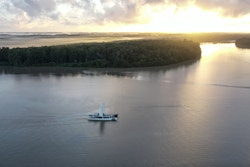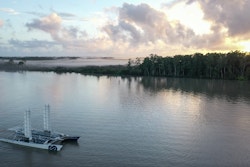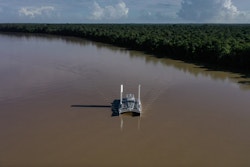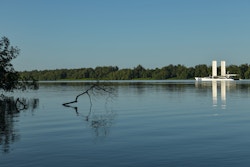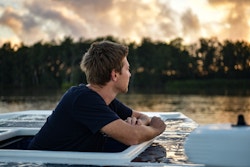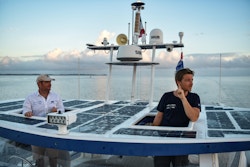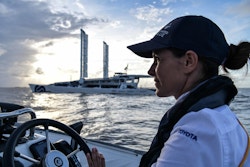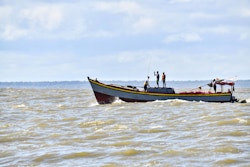Saint-Laurent-du-Maroni, French Guiana
Our crew has arrived in French Guiana, a region boasting exceptional natural heritage and combining cutting-edge technologies and Amazonian primary forest, a European spaceport and a quite unique biodiversity reserve.
Coming from: Marie-Galante, Guadeloupe
Weather conditions: Cloudy
Time of arrival: 9:30 AM
Land temperature: 27°C
Tricky sailing conditions on the Maroni River
Introducing the boat to some new latitudes and some quite unprecedented sailing conditions as far as Saint-Laurent du Maroni, the passage spanning nearly 800 nautical miles took 8 days in all.
A night on the Maroni
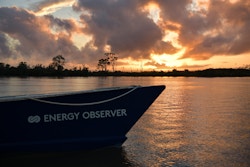
Sunset on the Maroni
After a night at anchor at the mouth of the Maroni, we sailed up the river for about fifteen miles to Saint-Laurent-du-Maroni. What a spectacle! Katia once again opened the way for the catamaran with the sounder from the zeppelin. David gave us some superb drone flights, while Julien and Jean-Baptiste ensured the smooth running of the boat.
Alone on the river except for a few fishermen's pirogues, we could listen to the sounds of the jungle. A moving navigation after weeks of talking about it and imagining it. Everywhere around us, a luxuriant, impenetrable, almost mysterious nature! We can't wait to discover what's coming next.
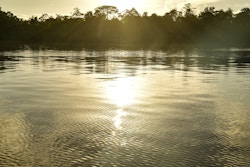
Sunrise on the Maroni River
Next step: Kourou and the Guiana space center
It is a major scientific site that we will then visit over the next few days: the Guiana Space Center, directed by CNES (the national centre for space studies), Energy Observer's scientific and educational partner.

Today, space is being used to try to understand climate imbalance and monitor its evolution. In this way, European satellites of the Copernicus constellation are providing scientists the world over with the data required to model the climate and monitor the changing ecosystems and the chemical make-up of the atmosphere. From melting ice to monitoring of forest cover, the satellites observe, measure and inform us about the state of the planet.
If space exploration has allowed mankind to travel thousands of kilometers from Earth, today it allows us to realize how unique it is, and that it is essential to preserve it.
